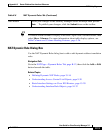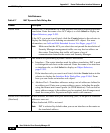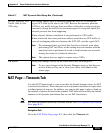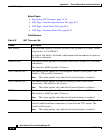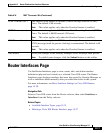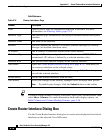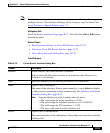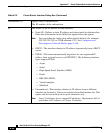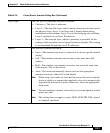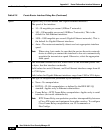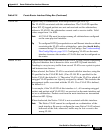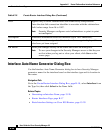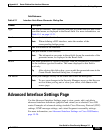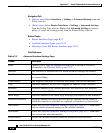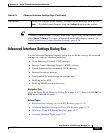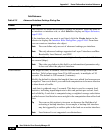
K-21
User Guide for Cisco Security Manager 3.2
OL-16066-01
Appendix K Router Platform User Interface Reference
Router Interfaces Page
Layer Type The OSI layer at which the interface is defined:
• Unknown—The layer is unknown.
• Layer 2—The data link layer, which contains the protocols that control
the physical layer (Layer 1) and how data is framed before being
transmitted on the medium. Layer 2 is used for bridging and switching.
Layer 2 interfaces do not have IP addresses.
• Layer 3—The network layer, which is primarily responsible for the
routing of data in packets across logical internetwork paths. This routing
is accomplished through the use of IP addresses.
Duplex The interface transmission mode:
• None—The transmission mode is returned to its device-specific default
setting.
• Full—The interface transmits and receives at the same time (full
duplex).
• Half—The interface can transmit or receive, but not at the same time
(half duplex). This is the default.
• Auto—The router automatically detects and sets the appropriate
transmission mode, either full or half duplex.
Note When using Auto mode, be sure that the port on the active network
device to which you connect this interface is also set to automatically
negotiate the transmission mode. Otherwise, select the appropriate
fixed mode.
Note You can configure a duplex value only if you set the Speed to a fixed
speed, not Auto.
Note This setting does not apply to serial, HSSI, ATM, PRI, DSL, tunnel,
or loopback interfaces.
Table K-10 Create Router Interface Dialog Box (Continued)



